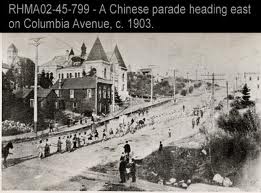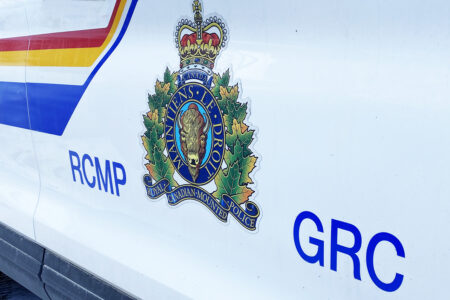Tales and Legends of the Mountain Kingdom: Rossland's "big deal" red light district
Back when I was a whippersnapper just out of high school, I took a job at Rossland’s now-defunct Co-operative Transportation Society, then commonly called the Rossland Co-op. It once stood where the Credit Union now stands and was once one of three Rossland gas stations, one of two Rossland garages where you could take your car to be fixed, and a place where vans transported Cominco workers up and down the Trail hill.
It was also a place where lots of Rossland old-timers used to come in, ostensibly to get car advice or other automobile-related services, but every so often an elderly gentleman would come into the front store, where I worked, and just want to chat.
At the time, this often bugged me; I was 18 and not really interested in chatting with old men (younger men were a different story), but once in a while a particular gentleman, very old, very decrepit, but still driving around, would come in and regale me with tales of Rossland’s past. He was very interesting to talk to, even though he talked very slowly, and I enjoyed his verbal history vignettes. Sadly, I do not remember his name, but I remember his truck and I remember one conversation in which he revealed to me that Rossland had a “red light district” back in the old days.
I had to laugh when he said that because I thought it was ludicrous. This sleepy one-horse town (as I believed it to be back in 1992) had a red light district? Seriously! In response to my laugh, the man chuckled at me and my naïvité, and with a glint in his eye said, “Oh yeah, and it was a big deal.”
Man, I thought to myself, what I would have given to see that! And what a shame it’s gone because, at that particular stage of my life, I thought Rossland was insufferably boring and that a red light district would no doubt liven things up.
Prostitutes at these houses were referred to as “inmates” and the madames called themselves “housekeepers” since prostitution was illegal and you couldn’t very well go around advertising yourself as a madame.
Now that I am regularly researching Rossland’s history, I have discovered that that this so-called red light district was actually Rossland’s one block, ramshackle Chinatown, located on Kootenay Avenue between St. Paul Street and Monte Cristo, just below the railroad tracks.
Rossland’s prostitutes worked out of houses run by women, or, as one might call them, madames–and none of them were Chinese.
There were known brothels on northern Queen Street and most likely other spots as well. But most infamously, two short strips along Kootenay Avenue and Leroi Avenue were known as “the line” or “the restricted district.” In 1898, a police raid saw 32 madams and prostitutes arrested, and subsequent raids produced higher numbers. That’s a lot of action in a small area.
So concerned were residents about the purity of young minds that prostitutes were eventually banned from the main business sector of town unless they needed groceries or other necessities of life, and they were banned from buying liquor. They could also go uptown to pay their fines at the courthouse, which they did often because fining madames and inmates was a major source of income for the city.
Indeed, local politicians were quite torn about the whole situation. Obviously, having a neighbourhood of such ill repute in town wasn’t ideal for the reputation of Rossland overall and of course there were moral issues to contend with as well. But the revenue from fining madames and prostitutes was too great to allow the City Fathers to shut the whole district down. The raid mentioned above netted the city between $600 and $900, which is 4.4% – 6.6% of the town’s annual revenue that year of $13,500.
So lucrative were these raids that after a few of them, the red light district kind of got legitimized a bit by the local government, because the police commission and the magistrate decided to allow prostitutes to operate if they paid a monthly fine that would not only let them continue to ply their trade, but it would ease up on the local justice system by eliminating the need for prostitutes to attend court in order for them to pay their fines.
As Ron Shearer says in his essay “The Chinese and Chinatown of Rossland: Fragments from Their Early History,” “In effect, the fines became business license fees.”
The system was still in place in 1916 when certain residents started to attack the local government about the situation. The mayor defended the policy, saying, “…the revenue received from this source was needed by the city and was used for clearing the snow from sidewalks, breaking the trails in the winter and everybody was getting the benefit of it.”
According to Shearer’s essay Rossland’s ladies of ill repute were from all over the place, but the bulk were from the States. Some were black, and there were three Japanese ladies, too. There were no Chinese prostitutes because there were no Chinese women (except for possibly one, depending on what sources you look at), and Shearer found no evidence that the Chinese men were in any way involved with the local prostitution scene, either as brother owners or as clientele–but he did say that he found no evidence that they weren’t involved, either. So it appears that the two most marginalized social groups in Rossland seemed to live in relative ease with each other.
One story tells of a young prostitute named Josie Perkins, who came to Rossland from San Francisco. She had been in town only a month, before a past tragedy–the death of her infant some time before–triggered some depression. This, combined with the departure of a good friend one morning, resulted in Perkins and her friend Capitiola Burns spending the rest of the morning drinking in two pubs. They then had lunch at a Chinese noodle house before Josie proceeded to a Chinese opium den where she smoked a fatal amount of that drug.
There was an inquest but it couldn’t agree one way or the other if the death had been an accident of a suicide. Shortly thereafter, a man arrived in Rossland looking for Josie; he had good news for her: she’d just inherited $30,000.
Rossland’s red light district started to decline in 1919 when the provincial police force sent a constable in from Nelson telling the city that if “the line” wasn’t cleaned up, Rossland’s city police force would be replaced with members of the provincial force.
The mayor and the magistrate, “Judge” Plewman, decided to shut down the red light district and several women were sent packing. One remained, ostensibly to “dispose of property”, but I guess it was just a ruse because her staying on seemed to restart the whole red light district, though on a smaller scale. With the tacit approval of two police commissioners, too, though that was short-lived because in 1921 there was a confrontation between the mayor and the police commission, resulting in the firing of the police chief.
The mayor then reordered the red light district to be closed once and for all. Faced with threats of imprisonment and fines, the madames and their inmates on “the line” left town.
In 1922, ownership of two lots, one on the corner of Kootenay Avenue and the other on the corner of St. Paul Street, where brothels had both been located, reverted to the city due to unpaid taxes.
By that time, Rossland was in decline anyway. The population was shrinking, the “roaring days” were coming to an end. There weren’t so many single men around town needing the entertainments a red light district provided. Rossland’s red light district became a respectable residential neighbourhood.
It’s safe to assume that the elderly gentleman who originally told me about the red light district has passed on by now. I am grateful he told me about it because it was something that always stuck with me, and now in later years, it’s given me some inspiration to go and find out more about something I had laughed off so easily when I was a youth.
Sources:
1. “The Chinese and Chinatown of Rossland: Fragments from Their Early History”, and essay by Ronald Shearer.
2. The Roaring Days: Rossland’s Mines and the History of British Columbia, by Jeremy Mouat.
























